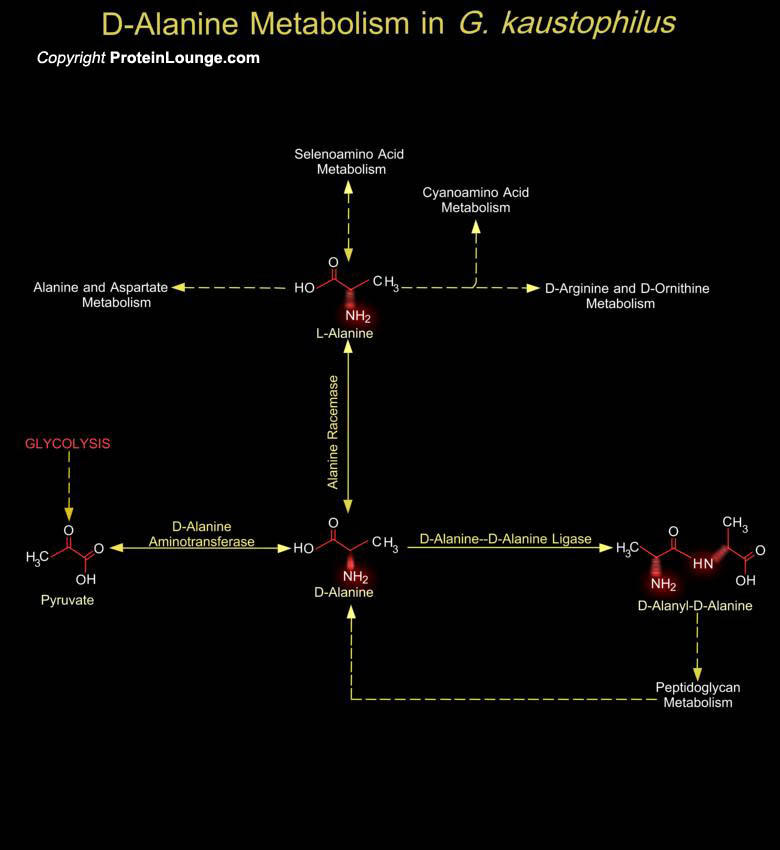
Geobacillus kaustophilus HTA426, which was isolated from the deep-sea sediment of the Mariana Trench, is a thermophilic Bacillus-related species whose upper temperature limit for growth is 74 degrees Celsius (optimally 60 degrees Celsius). It is known that there are at least 12 other thermophilic Geobacillus species, which have been reclassified from the genus Bacillus (Ref.1).The cell wall of these bacteria is a unique biopolymer, containing both D- and L-Amino acids. The terminal peptide is D-Alanine although other amino acids are present as D- isomers and this is the only known biological molecule that contains D-Amino acids, which are responsible for the building of peptidoglycan. A key step in peptidoglycan layer assembly and deposition is the subsequent enzymic[..]
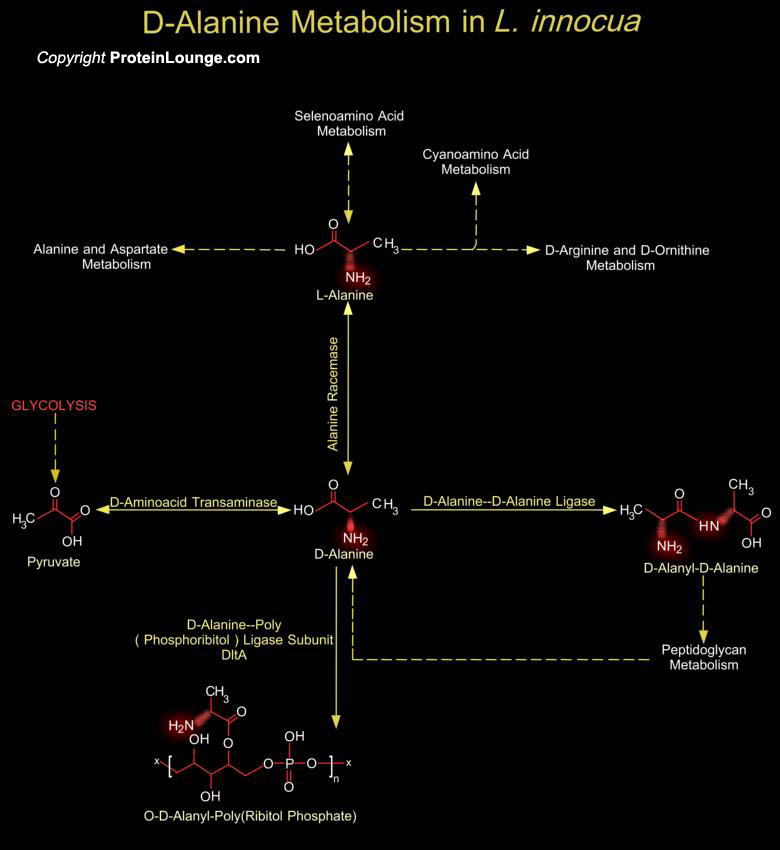
The bacterial genus Listeria is currently taxonomically subdivided into six species: L. monocytogenes, L. seeligeri, L. ivanovii, L. innocua, L. grayi, and L. welshimeri. Two of the species are pathogenic, causing the disease listeriosis. L. innocua is widespread in the environment and in food. The only phenotypic characteristic that classically distinguishes L. monocytogenes from L. innocua is hemolysis (Ref.1).As in most Gram-positive bacteria, the cell wall of L. monocytogenes is composed of a thick peptidoglycan containing two types of anionic polymers: (i) the TAs (Teichoic Acids), which are covalently linked to the peptidoglycan; and (ii) the LTAs (Lipoteichoic Acids), which are polyphosphoglycerol substituted with a D-Ala (D-Alanyl) ester or a glycosyl residue[..]
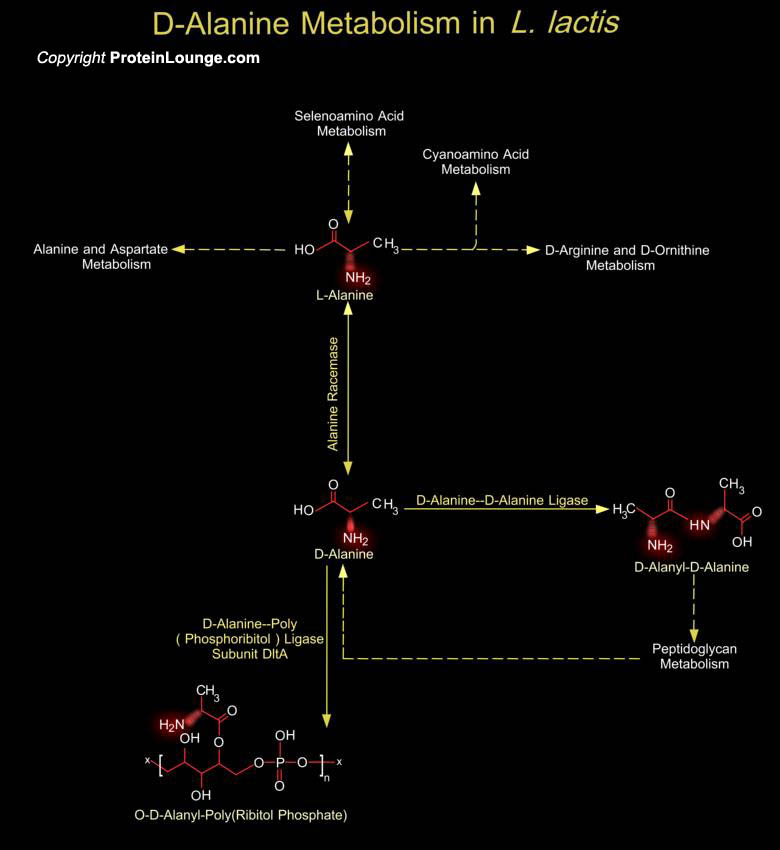
Lactic acid bacteria are a heterogeneous group of microorganisms that convert carbohydrates into lactic acid. They comprise both pathogens (such as Streptococcus pneumoniae or Streptococcus pyogenes) and useful bacteria (such as Streptococcus thermophilus and Lactococcus lactis (L. lactis), which were used for millennia in milk fermentation). In nature, L. lactis occupies a niche related to plant or animal surfaces and the animal gastrointestinal tract. It is believed to be dormant on the plant surfaces and to multiply in the gastrointestinal tract after being swallowed by a ruminant. In contrast, "domesticated" species of L. lactis, used by dairy industry as starters in cheese fermentation, live in a different niche, which is defined by technological[..]
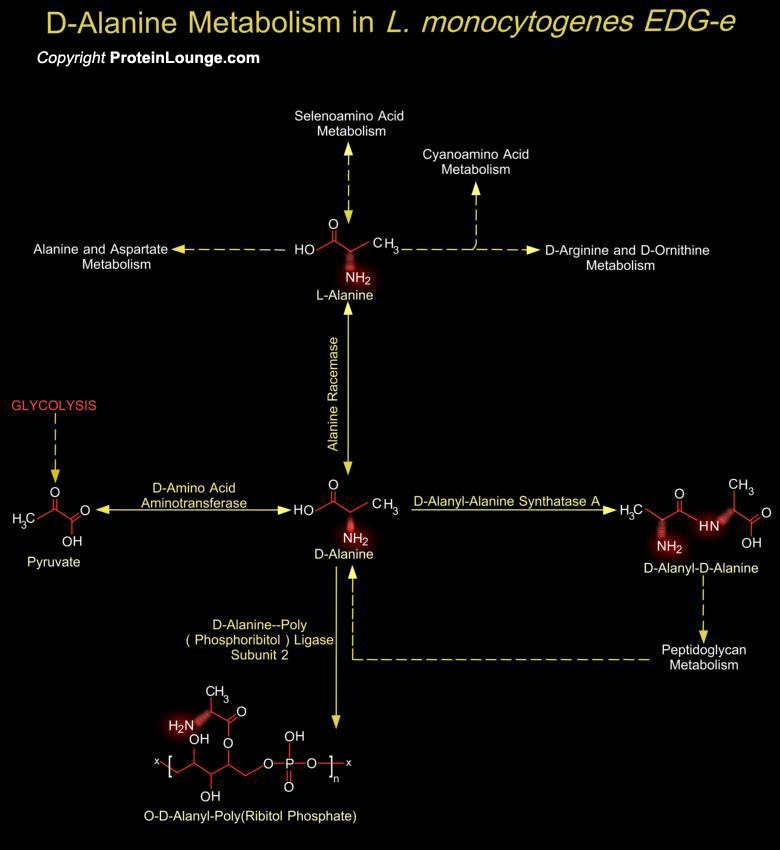
Listeria monocytogenes(L. monocytogenes) is a Gram-positive facultative intracellular bacterial pathogen that elicits a strong cellular immune response following infection and therefore has potential use as a vaccine vector. However, while infections by L. monocytogenes are fairly rare and can readily be controlled by a number of antibiotics, the organism can nevertheless cause meningitis and death, particularly in immunocompromised or pregnant patients. L. monocytogenes EGD-e (Serovar 1/2a) is a derivative of strain EGD (Ref.1). As in most Gram-positive bacteria, the cell wall of L. monocytogenes is composed of a thick peptidoglycan containing two types of anionic polymers: (i) the TAs (Teichoic Acids), which are covalently linked to the peptidoglycan; and (ii) the[..]
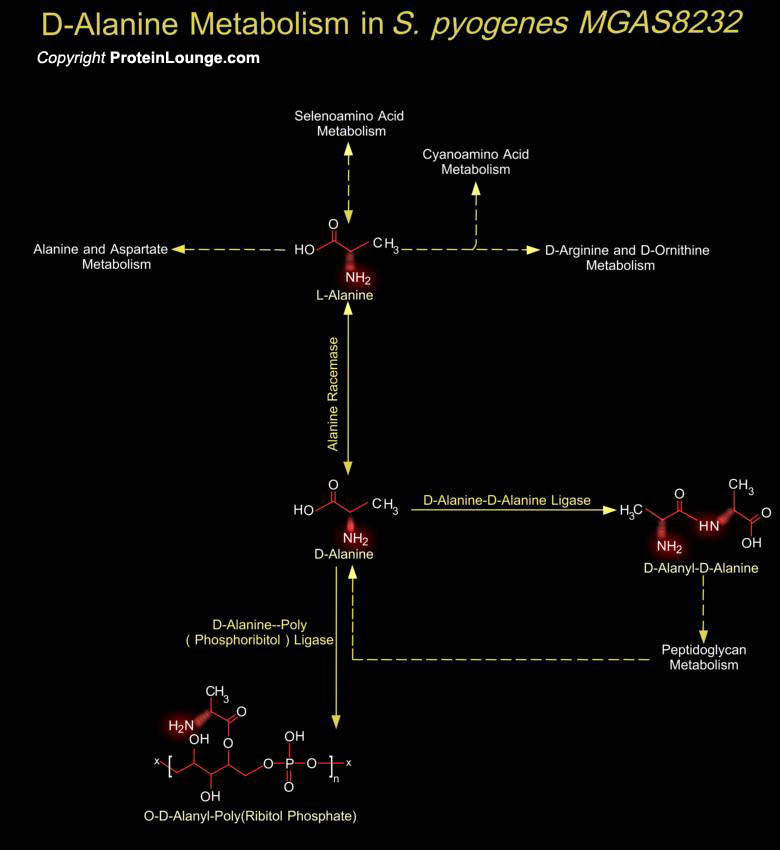
Group-A Streptococcus pyogenes remains an important human pathogen responsible for a variety of suppurative infections, including pharyngitis, scarlet fever, impetigo, and cellulitis and for nonsuppurative sequelae, such as acute rheumatic fever, acute Glomerulonephritis, and reactive arthritis (Ref.1). S. pyogenes strains are grouped into two classes on the basis of post infectious sequelae associated with each strain, Class-I is responsible for rheumatic fever and Class-II is responsible for acute glomerulonephritis. S. pyogenes strain MGAS8232 (Serotype M18) was isolated from a patient with acute rheumatic fever. The Serotype M18 is among the most prevalent in terms of involvement in severe invasive infections (Ref.2, 3 & 4).As is the case in other Gram-positive[..]
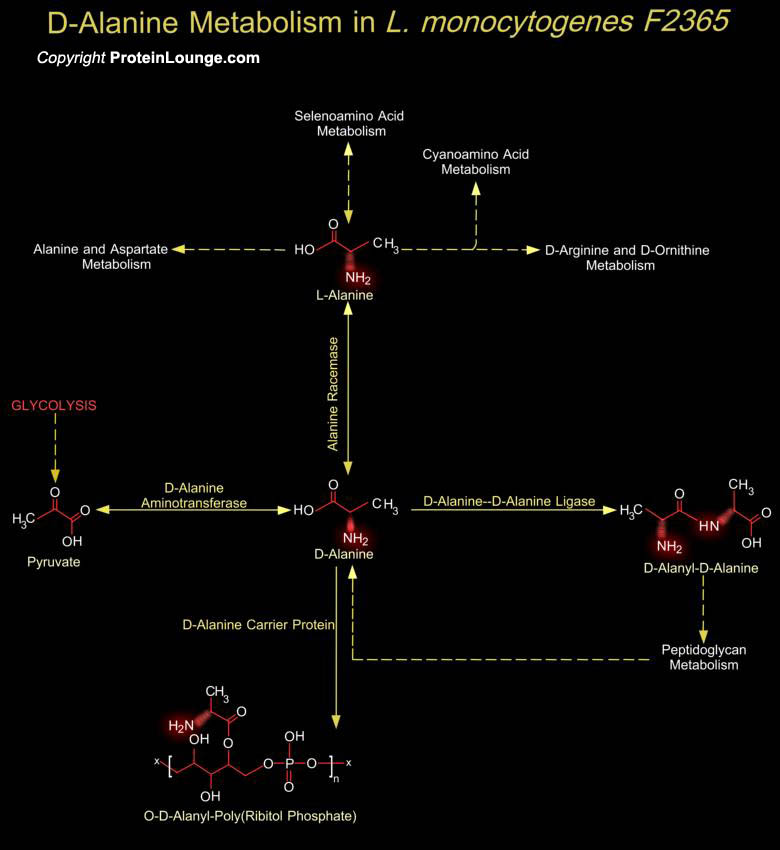
Listeria monocytogenes(L. monocytogenes) is a Gram-positive bacterium widely spread in nature and responsible for sporadic severe infections in humans and other animal species. This pathogen is a facultative intracellular microorganism capable of invading and surviving in most host cells, including epithelial cells and macrophages. L. monocytogenes strain F2365 (Serotype 4b) has been isolated from Jalisco cheese outbreak in 1985 in California (Ref.1).The naturally occurring L-Alanine isomer is racemized to its D-form through the action of a class of enzymes called dal (alanine racemase). This enzyme is ubiquitous among prokaryotes and with very few exceptions are absent in eukaryotes. It catalyzes the racemization of L-Alanine and D-Alanine, using Pyridoxal[..]
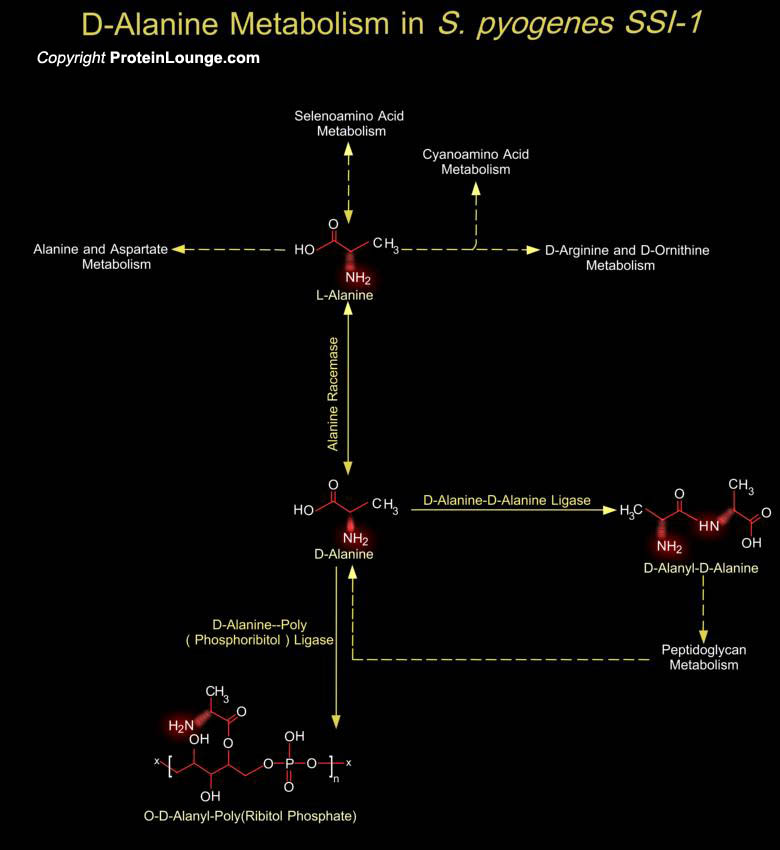
Group-A Streptococcus pyogenes remains an important human pathogen responsible for a variety of suppurative infections, including pharyngitis, scarlet fever, impetigo, and cellulitis and for nonsuppurative sequelae, such as acute rheumatic fever, acute glomerulonephritis, and reactive arthritis (Ref.1). S. pyogenes strains are grouped into two classes on the basis of post infectious sequelae associated with each strain, Class-I is responsible for rheumatic fever and Class-II is responsible for acute glomerulonephritis. S. pyogenes strain SSI-1 (Serotype M3) is among the most prevalent in terms of involvement in severe invasive infections (Ref.2 & 3).As is the case in other Gram-positive bacteria, the cell wall of S. pyogenes is associated with an array of proteins[..]
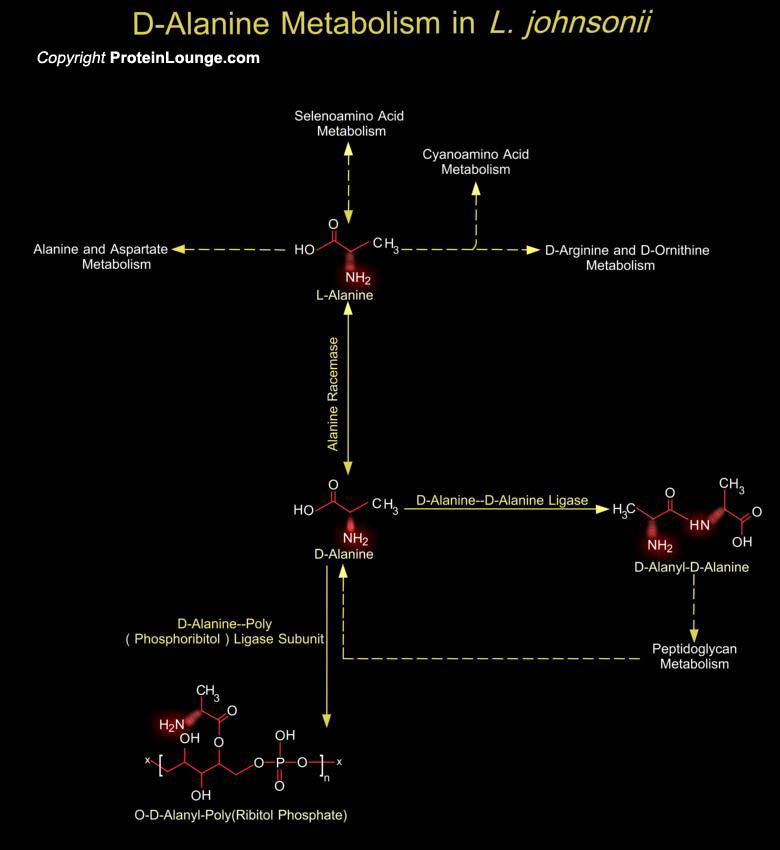
Lactic acid bacteria play important roles in food conservation because of their fermentative ability and contribute to the equilibrium of the gastrointestinal tract microbiota. Lactobacillus johnsonii (L. johnsonii) is commonly found in the gastrointestinal tract and adhere to intestinal cells. Such interactions of bacteria with the gastrointestinal tract contribute to its protection against pathogenic microorganisms. A close association between the bacteria and their environment undoubtedly results in adaptation of their metabolic capacities (Ref.1).D-Alanine occurs to the extent of 1 to 2 per cent of the dry cells of various lactic acid bacteria including L. johnsonii and L-Alanine is essential for L. johnsonii growth. The naturally occurring L-Alanine isomer[..]
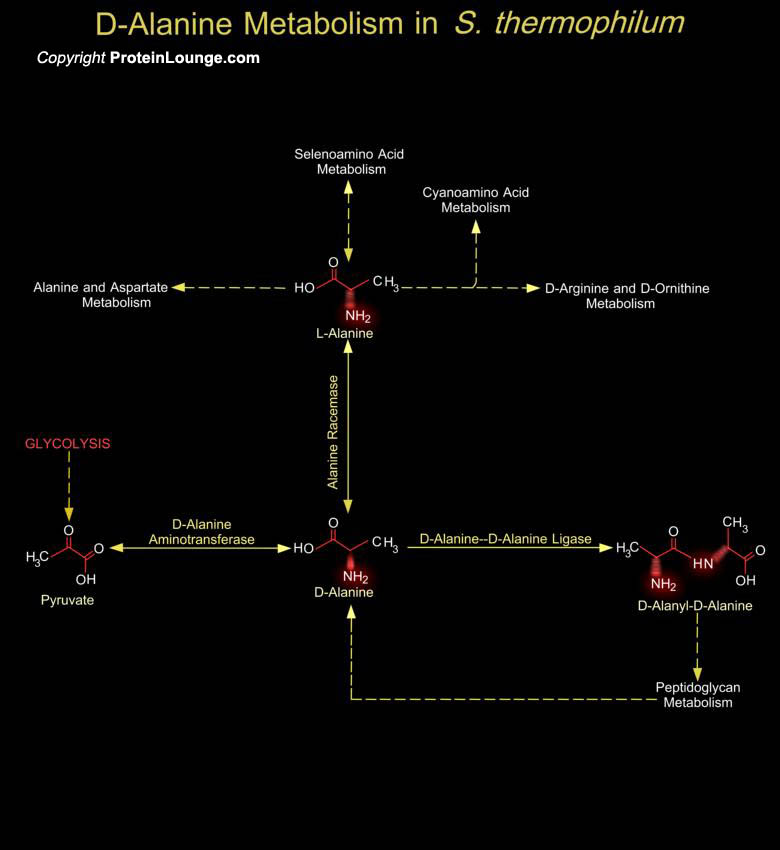
Symbiobacterium thermophilum is a symbiotic Gram-negative and tryptophanase-positive thermophile. It is an uncultivable bacterium isolated from compost that depends on microbial commensalism. It does not grow by itself under standard culture conditions; however, when cocultured with Bacillus sp., it propagates. S.thermophilum proliferates under both aerobic and anaerobic conditions (Ref.1, 2 & 3).The cell wall of this Gram-negative bacterium constitutes a multifaceted fabric that is essential for survival, shape, and integrity. Macromolecular assemblies of cross-linked peptidoglycan, polyanionic TAs (Teichoic Acids), and surface proteins function within this envelope. A key step in peptidoglycan layer assembly and deposition in the cell wall of S. thermophilum is[..]
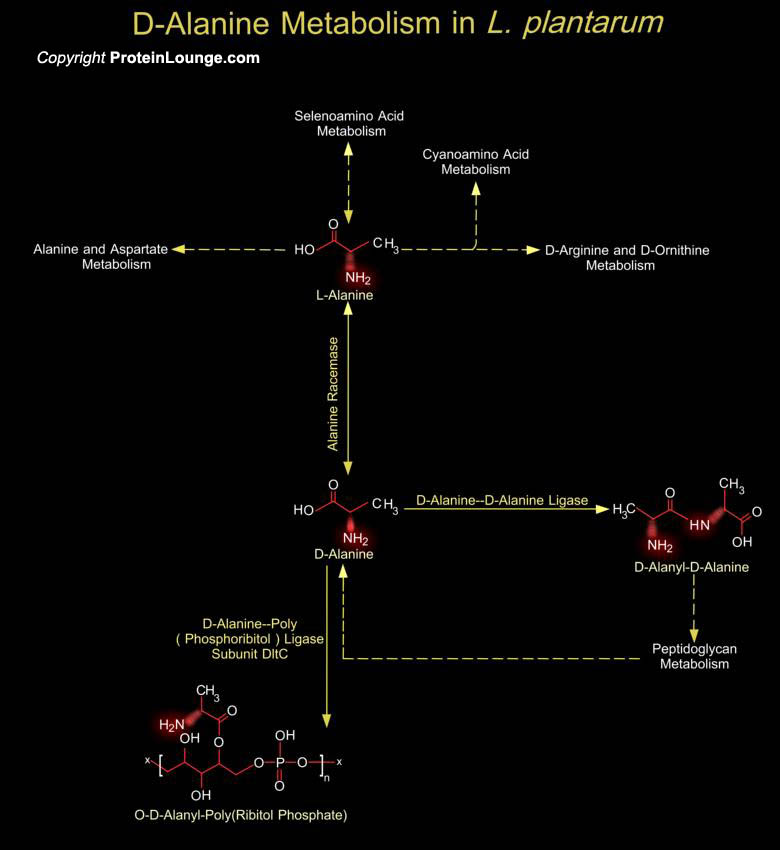
Lactiplantibacillus plantarum (previously Lactobacillus plantarum) is a member of the facultative heterofermentative group of Gram-positive Lactobacilli that are frequently isolated from plant material and various fermented foods. Lactobacilli produce lactic acid and are used for many different things, including yogurt production and the maintenance of healthy intestinal microflora. Lactobacilli are commonly associated with the gastrointestinal tract of humans. L. plantarum is the dominating bacterial species in most naturally fermented foods. It is an excellent alternative to antibiotics, and makes use of its potential to block receptor sites for Gram-negative bacteria. L. plantarum is capable of metabolizing semi resistant fibers, such as, onions, garlic, artichoke,[..]
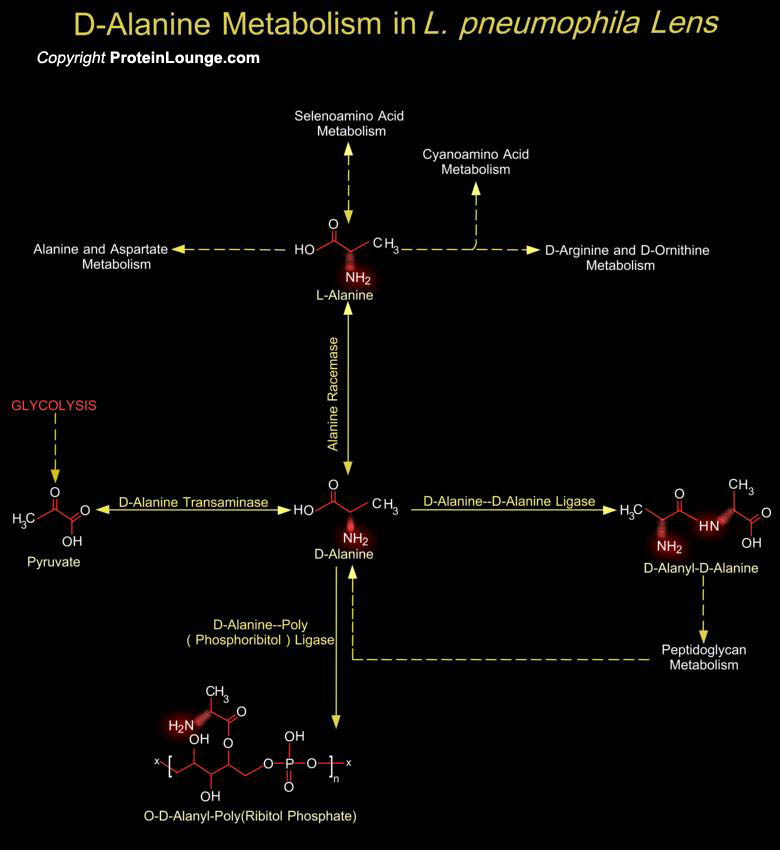
Legionella pneumophila is the causative agent of Legionnaires' disease, which replicates as an intracellular parasite of amoebae and persists in the environment as a free-living microbe (Ref.1). D-Alanine is a necessary precursor in the biosynthesis of cell wall in this bacterium. L-Alanine is also a product of several other metabolic pathways like Cyanoamino Acid Metabolism, Selenoamino Acid Metabolism, Alanine and Aspartate, and D-Arginine and D-Ornithine Metabolism(Ref.2). The naturally occurring L-Alanine isomer is racemized to its D-form through the action of a class of enzymes called alr (alanine racemase). This enzyme is ubiquitous among prokaryotes and with very few exceptions are absent in eukaryotes.alr belongs to the class of Isomerase enzymes,[..]
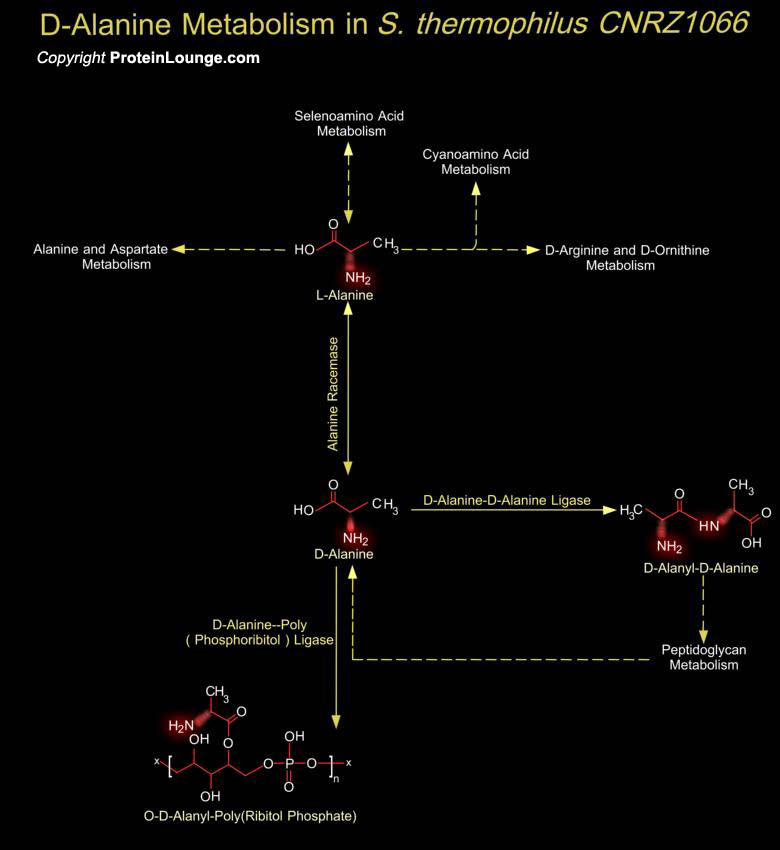
Streptococcus thermophilus is one of the most economically important lactic acid bacteria used in the manufacture of yogurt and cheeses. This bacterium belongs to the group of GRAS (Generally Recognized As Safe) bacteria which is an exception in the Streptococcus genus. S. thermophilus is used, along with Lactobacillus sp., as a starter culture for the manufacture of several important fermented dairy foods, including yogurt and Mozzarella cheese. Its use has increased significantly during the past two decades, as a result of the tremendous increase in consumption of these products (Ref. 1 & 2).The cell wall of these Gram-positive bacteria constitutes a multifaceted fabric that is essential for survival, shape, and integrity. D-Alanine occurs to the extent of 1 to 2[..]

